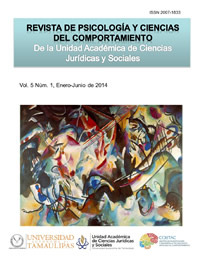Contrast of a model of sexual reproductive
Keywords:
sexuality, pregnancy, abortion, Internet, participationAbstract
Social networking has achieved unprecedented prominence in the daily lives of young people. It is estimated that users spend on average three hours to review their personal pages and their contacts. In this regard, issues such as sexuality, reproductive health, pregnancy and induced abortion are central to the agenda of the users due to access information and build it. From these data, an exploratory cross-sectional study with a nonrandom selection of 215 students at a public university was performed. A theory was proposed to explain the participation of young people on the Internet and eight dimensions were specified scenarios to anticipate social networks around the discussion of the legality of abortion. The results show that the accumulation of information is the indicative factor of reproductive participation in social networks (? = 0.49) while setting parameters siguieren acceptance of the specified ratios [?2 = 24.13 (24 df) p = 0.000; GFI = 0.975; RMR = 0.003]. Referring to the state of knowledge, the contributions of this study were discussed in order to recommend further research and set limits to reproductive health policiesReferences
Barriga, L. (2011). Reflexiones sobre la historia de la profesión del Trabajo Social. Revista Plaza Pública, 5, 252-273
Carreón, J. (2013). Intenciones de sexo consensual y aborto inducido en estudiantes de una universidad pública de México. Cuadernos Hispanoamericanos de Psicología, 13 (2), 24-38
Cooney, K. (2010). The promise and pitfalls of employer-linked job training for disadvantaged workers. Administration in Social Work, 34, 27-48
García, C. (2011). Estructura de las actitudes hacia los hospitales. Psicología y Salud, 21, 57-64 García, C. (2013). Creencias en torno al aborto inducido en un hospital público. Revista
Costarrisense de Salud Pública, 22, 14-19
Guevara, N. (2011). Trabajo Social en América y Colombia: aproximaciones históricas al Trabajo Social. Revista Plaza Pública, 4, 72-97
Hardina, D. (2011). Are social service managers encouraging consumer participation in decision making in organizations. Administration in Social Work, 35, 117-157
Haselfeld, Y. (2010). Organizational responses to social policy: the case of welfare reform.
Administration in Social Work, 34, 148-167
Hurtado, N. (2013). Embarazo en la adolescencia: entre el fracaso informativo y el logro psíquico.
Antioquia, 5 (1) 93-102
Instituto Nacional de Estadística Geografía e Informática (2010). Mujeres y hombres en México.
México: INEGI
Jiménez, M. (2010). Comunicación sexual en adolescentes y su implicación en la consistencia del uso del condón. Enseñanza e Investigación en Psicología. 15, 107-129
Letz, C. (2010). Critical Thinking in child welfare supervision. Administration in Social Work, 34, 68- 78
Olaitan, O. (2011). Attitudes University studies toward abortion in Nigeria. Journal of Neuroscience and Behavioral Health, 3, 74-69
Petracci, M. (2011). Opiniones y representaciones sociales de varones sobre el aborto en Buenos Aires, Argentina. Sexualidad, Salud y Sociedad, 8, 10-35
Riveiro, L. (2011). La tensión del asalariado del trabajo social en sus orígenes. Revista Plaza Pública, 4, 97-107
Serrano, M. (2011). Conocimiento, actitud y percepción de los médicos residentes de ginecología y obstetricia del ISSSTE acerca de la anticoncepción de emergencia. Revista de Especialidades Médico Quirúrgica, 16, 215-220
Downloads
Published
Issue
Section
License
Those authors who have publications with the Journal of Psychology and Behavioral Sciences of the Academic Unit of Legal and Social Sciences, accept the following terms:
a. The authors will retain their copyright and guarantee the journal the right to first publish their work, which will be simultaneously subject to the Creative Commons Attribution-NonCommercial-Share Alike 4.0 International License. which allows third parties to share the work as long as its author and his first publication are indicated this journal.
b. Authors may adopt other non-exclusive license agreements for the distribution of the version of the published work (e.g., deposit it in an institutional telematic archive or publish it in a monographic volume) provided that the initial publication in this journal is indicated.
C. Authors are allowed and recommended to disseminate their work through personal communication (e.g. colleagues) before and during the submission process, for purposes of feedback or enrichment of the work, which can produce interesting exchanges
Accepted 2015-04-01
Published 2014-05-30








